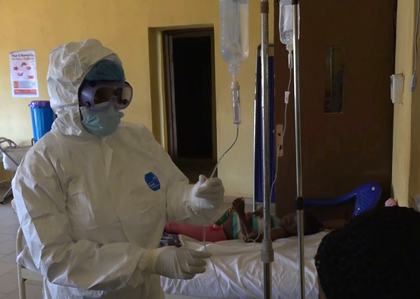Death toll from Lassa fever rises to 138 in Nigeria
By IANS | Updated: May 16, 2025 14:12 IST2025-05-16T14:06:32+5:302025-05-16T14:12:52+5:30
Abuja, May 16 The death toll from the Lassa fever outbreak in Nigeria, Africa's most populous country, has ...

Death toll from Lassa fever rises to 138 in Nigeria
Abuja, May 16 The death toll from the Lassa fever outbreak in Nigeria, Africa's most populous country, has risen to 138 since the beginning of this year, public health authorities said.
In a statement on its website, the Nigeria Centre for Disease Control and Prevention (NCDC) said that 717 confirmed cases have been recorded so far.
At least 18 out of the 36 states in the country have been affected by the viral haemorrhagic disease so far this year, with the southern states of Ondo and the northern states of Bauchi and Taraba the worst-hit, accounting for more than 71 per cent of the total confirmed cases, the NCDC said. This development, according to the public health agency, has "signalled persistent hotspots despite nationwide interventions".
With the latest death toll, the case fatality rate has risen to 19.2 per cent, the NCDC said, noting that overall, this rise in the casualties figure remained alarming.
The public health agency said young adults between the ages of 21 and 30 are the most affected, with the median age of infection reported at 30 years. It noted that more males than females had been affected, with a male-to-female ratio of 1:0.8.
The NCDC identified poor health-seeking behaviour, high treatment costs in some areas, and limited awareness in high-burden communities as major challenges. It has so far activated a multi-sectoral incident management system to coordinate nationwide response efforts.
In 2024, Nigeria reported 214 deaths from Lassa fever, according to the NCDC, Xinhua news agency reported.
According to the World Health Organisation, Lassa fever is an acute viral haemorrhagic illness caused by Lassa virus, a member of the arenavirus family of viruses.
Humans usually become infected with the Lassa virus through exposure to food or household items contaminated with the urine or faeces of infected Mastomys rats. The disease is endemic in the rodent population in parts of West Africa.
Person-to-person infections and laboratory transmission can also occur, particularly in healthcare settings, in the absence of adequate infection prevention and control measures.
Diagnosis and prompt treatment are essential. The overall case-fatality rate is 1 per cent. Among patients who are hospitalised with severe clinical presentation of Lassa fever, case-fatality is estimated at around 15 per cent. Early supportive care with rehydration and symptomatic treatment improves survival.
About 80 per cent of people who become infected with Lassa virus have no symptoms, and 1 in 5 infections result in severe disease, where the virus affects several organs such as the liver, spleen and kidneys.
Disclaimer: This post has been auto-published from an agency feed without any modifications to the text and has not been reviewed by an editor
Open in app